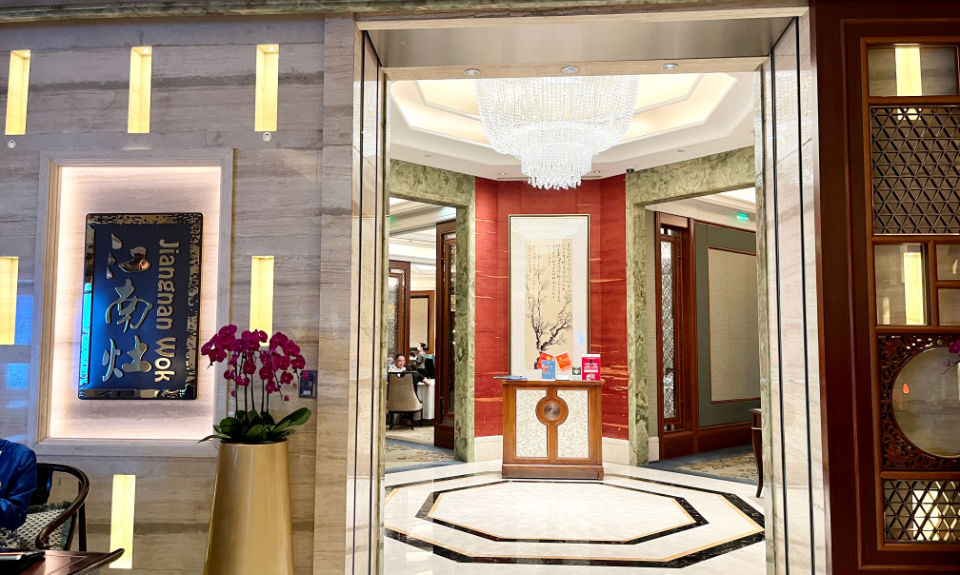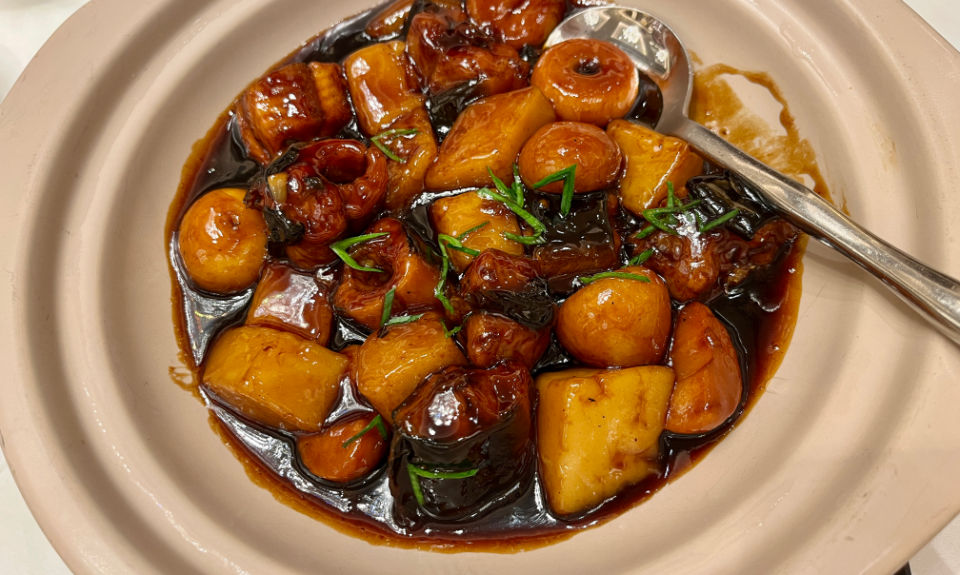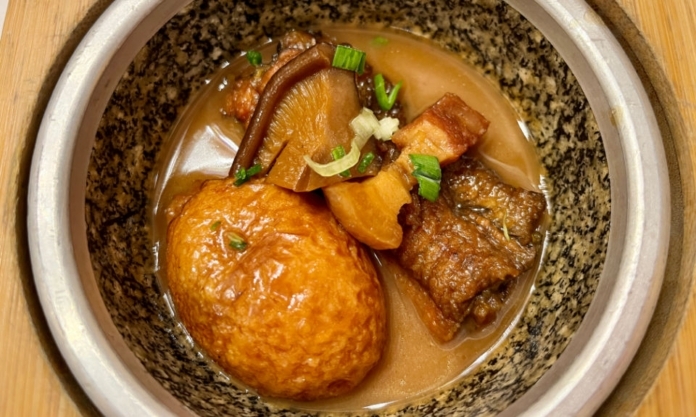We are not expecting Nanjing to have the finest restaurants when Shanghai is only 1.5 hours away by train. That said, when it comes to Huaiyang cuisine, one of the eight major culinary traditions in China, Nanjing is certainly blessed with some top-tier restaurants in the field.
Huaiyang (淮扬) cuisine in its broader sense is also known as Jiangsu cuisine (Sucai 苏菜). Strictly speaking, however, it refers to the culinary tradition that originated from Yangzhou, a city about 90 kilometres from us which used to be the Manhattan of imperial China before the emergence of Shanghai. It is characterised by moderate seasoning, an obsession with knife skills, and the extraordinary time and effort spent on ordinary ingredients.
For these reasons, Huaiyang cuisine has been playing a major role at state banquets ever since the founding of PRC in 1949, as the food is refined enough for such formal occasions without seeming luxurious, with flavours gentle enough to make guests from various regions feel welcome.
It is for the same reasons that not many Huaiyang restaurants fare well outside Jiangsu. The technical requirements are high and the profit margin limited, and most people would prefer the excitement of Sichuan spices over the subtlety of a doufu soup in Huaiyang style.
Luckily, we are in the capital of Jiangsu, where there is never a lack of good Huaiyang restaurants. One of them is Jiangnan Wok (Jiangnan Zao; 江南灶) in the Shangri-La Nanjing hotel. It has been Nanjing’s only two-diamond restaurant on Dianping’s Black Pearl Restaurant Guide ever since 2018 when the ranking was released for the first time. These days, one can no longer talk about Nanjing’s food scene without mentioning this famous restaurant.

The fame of the restaurant largely comes from the chef, Hou Xinqing (侯新庆), who was trained in Yangzhou and later worked as chef in a few Shangri-La restaurants before the opening of Jiangnan Wok in late 2014. He was also once quite active on the screen, from chef competitions to CCTV documentaries. Before COVID, people would come to Nanjing just for a meal at Jiangnan Wok, even though they understood that Chef Hou was probably not in the kitchen.
Putting the hype aside, the food is solid indeed. In fact, I was seriously impressed when I ate at Jiangnan Wok for the first time back in 2016. It was at someone’s birthday banquet and I knew nothing about the chef or the restaurant at that time. Everything was done to the best I could imagine.
My later experiences over the following years, to be honest, never reached that level, although they were not bad either. Maybe Chef Hou was really in the kitchen on that first visit.
With adjusted expectation, I still find Jiangnan Wok to be a satisfying option for either a night of celebration or a relaxing weekend lunch, or any other occasions in between. The main dining area is now less busy than pre-epidemic days, but you might still want to make reservations for weekends. If somehow you manage to gather a group of 6 or more, with a budget of ¥500 minimum per person (drinks excluded), then I would recommend reserving a banquet room.
The ambience of the main dining hall is a mix of elegance and casual; while the decor is what you would expect of a 5-star hotel, you get to order for yourself using a paper menu that has check boxes.
I actually prefer self ordering as I feel more comfortable taking my time. The menu does not include many pictures, but the English translation is generally useful. Notice that the serving sizes are not translated, so you may want to figure out whether the dish comes as a single-person portion (wei; 位) or a normal plate good for sharing (li; 例).
The menu is quite focused, especially considering the fact that some dishes are made in roughly the same style, which means you usually want to avoid ordering more than one of them at the same time.

In fact, most people visit Jiangnan Wok mainly for a few signature dishes. These include Braised Black Marbled Pork, Crispy Braised Veal, Steamed Yellow Croaker Stuffed with Crab Meat, and Huaiyang classics such as Stewed Bean Curd Strips with Shredded Chicken and Ham, Shredded Doufu Soup and Huaiyang Style Minced Pork Balls.
In addition, anything on the menu that has “eel” is a specialty. A few notes must be made on the messy terminology, though. Most of the eels on the menu here, as well as in many other places of this region, are not true eels, but a type of eel-like fish that live in ponds and rice fields, often known as “swamp eels.” They are called “shan” (鳝) in Chinese, whereas real eels are called “man” (鳗).
Swamp eels are an important source of deliciousness in the Jiangsu-Shanghai area, and there are various ways of cooking them. A typical way in Huaiyang cuisine is called “ruandou” (软兜), in which the eels are boiled, filleted, and then stir-fried with garlic and onions.
The dish will eventually look like a plate of fish noodles that are tender and moist. You can find it on the menu here as Huai’an Style Braised Eel in Brown Sauce, or Fragrant Fried Rice with River Eel, if you like it diced and topped on fried rice.
Much as I like ruandou, my favourite type of swamp-eel dish is a Nanjing classic, known as “shengqiao” (生敲). To make it, eel fillets are pounded with the spine of the cleaver, before being deep-fried until fully crispy, and then stewed with broth, soy sauce and yellow wine. The purpose of pounding and deep frying is to make the eel meat extremely soft and absorbent when it is stewed. At Jiangnan Wok, the dish comes as Stewed Finless Eel with Eggs stuffed with Pork in Soy Sauce, which is an innovative version of the classic, Bright-Moon Shengqiao, made by replacing pigeon eggs with hard-boiled eggs filled with minced pork in place of the yolk, and again deep fried, then finally stewed with the eel.
Now comes some real eel; Braised River Eel with Handmade Rice Cakes and Garlic uses big chunks of river eel that melt in your mouth.
The sticky rice cakes are soft and satisfying to chew. The garlic is starchy and creamy, assuming you do eat garlic. This dish is somewhat similar to another on the menu; Braised Large Yellow Croaker and Handmade Rice Cakes, so you may want to pick only one of them. The former is sweet, whereas the latter is savory, if that would help you make the choice.
While some of the dishes are more suitable for sharing with a larger group, many others come in individual servings which are convenient for solo diners and couples.
The Shredded Tofu Soup with Crab Shell Pastry is particularly suitable for those who want just a small sampling of two Huaiyang classics at the same time, as you drink the soup from a teacup following a crispy bite of the pie.
The minced pork balls here are much smaller than the traditional “lion’s head” (shizitou; 狮子头), perfect for one person without sacrificing the unique texture for which it is renowned. The Handmade Black Sesame Glutinous Rice Ball comes with only one medium-sized rice ball (tangyuan; 汤圆) which is hands down the best of the kind.
All in all, there are many reasons to give Jiangnan Wok a try if you haven’t yet. But is it the best Huaiyang restaurant in town? The discussion shall continue in future issues.
Jiangnan Wok 江南灶, 1F Shangri-la Nanjing, 329 Zongyang Lu 中央路 329号 Tel: 86305988. Hours: 11:30-14:00 / 17:00-21:30









